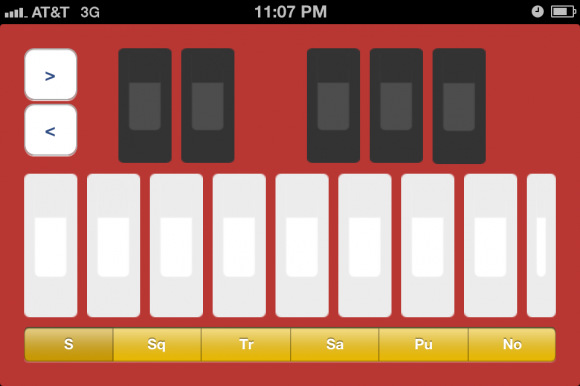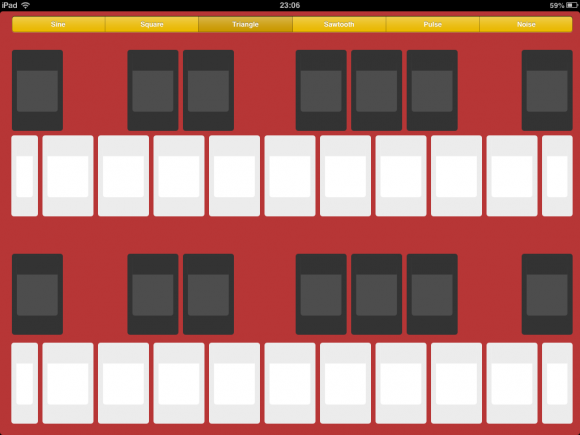Just for fun, I made my own synthesizer keyboard app for the iPad and iPhone. It’s all homebrew stuff. I created my own oscillator and ADSR envelope routines and just rely on the OS for audio sample callbacks. It can play back any of the following waves: sine, square, triangle, sawtooth, pulse, and noise. If you’re familiar with old-school game and computer systems, like the NES and C64, you’ll recognize some of these sounds.
I’ve previously demoed the synth music player, which uses tracked files for note playback. This is the first time I’ve hooked up the synth code to a UI system so that you can play music directly.
This keyboard runs on iPhone and iPad. Here are a couple of screenshots.
iPhone:
And here’s a demo of me playing with the app on the iPad:

